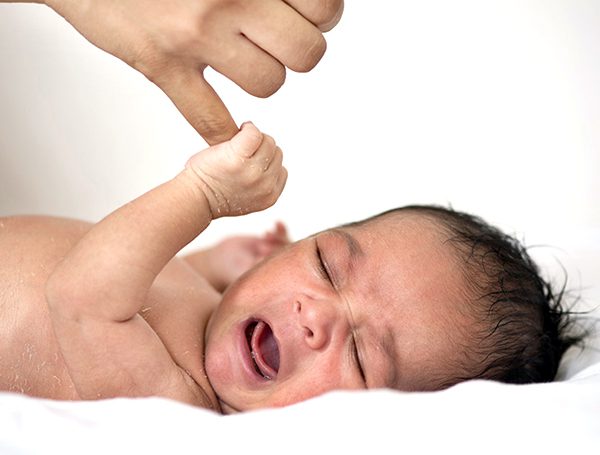
Have you noticed and observed that your baby used to be active, but lately has become dull and weak? If you have noticed something like that, there might be a possibility that your child is anemic. Now, you must be wondering that how a baby could have anemia? It is a fact, one cannot overlook. Just like adults, babies also have iron deficiency which causes anemia. In fact, anemia is the most common condition widely spread among children worldwide.
What is iron deficiency anemia? What might happen if the infant’s body did not get enough iron? How much iron is needed? How iron deficiency leads to anemia? What are the causes and symptoms of iron deficiency anemia? These must be the questions you are pondering over. Here you will get to know all the details regarding iron deficiency anemia.
Iron Deficiency Anemia
The hemoglobin in red blood cells in our body contains iron. Hemoglobin is the protein present in red blood cell, which is responsible to carry oxygen to all parts of the body. Iron gives hemoglobin the strength to carry out oxygen to different parts. Children who become iron deficient does not get enough iron in their diet, which means that the hemoglobin made by their body is not enough. Therefore, less oxygen reaches the tissues and cells, resulting in a low count of red blood cells. This very condition of the body is known as iron deficiency anemia (IDA). Moreover, there are developmental problems and cognitive delays in children who are iron deficient. To cut it short, iron deficiency is a real problem leads to other different problems if not treated within time.
Causes of iron deficiency anemia (IDA) in babies
Iron deficiency anemia can be caused by
- Insufficient consumption of iron
The newborns acquire all the iron through breast milk. After 6 months, you must give your infant food rich in iron since breast milk will not be sufficient. Babies who continue to be fed solely on breast milk have the possibility to be anemic.
- Cow milk if introduce before 12 months
Cow milk when given to infants before 12 months have a negative effect. Though it is a good source of vitamin D, calcium, and other nutrient, but is low on iron. As a matter of fact, the least amount of iron present in cow milk is not absorbed by an infant’s intestine and does not get into the body. Being rich in other sources will lead the infants to lose their appetite, which results in babies eating less of other foods that would normally provide the iron they need. It could cause the infants to develop anemia even on consuming iron through other food sources.
- Diabetic Mothers
Women who turn out to have diabetes during pregnancy are at the risk of delivering anemic babies. A study suggested that around 65% of diabetic mothers had low iron levels and of them, about 25% had severe iron deficiency. They hardly pass iron to the baby.
- Premature birth
Premature babies do not have sufficient iron stores at the time of birth, so they are at the highest risk to develop anemia.
- Low birth weight
Mother’s hemoglobin level plays an important role for the child during pregnancy. If the mother is anemic, it will increase the risk for the babies to be low birth weight.
All above mentioned factors contribute to iron deficiency anemia, which means that the body cannot make enough red blood cells due to a lack of iron. Therefore, s role for proper development and growth.
Symptoms of Iron deficiency anemia in babies
The following symptoms will signal that your baby might have iron deficiency anemia.
- Fatigue and tiredness
Fatigue and tiredness are the most common symptoms, you find in infants who have low iron levels. They show a lack of interest in activities.
- Pale skin
Another common sign associated with iron deficiency anemia is pale skin.Your baby’s skin could lose its color, and appears pale and dull, significantly around the hands and eyelids.
- Disinterest in food and low appetite
Another common factor is that the infant may eat less or eat nothing at all.
- Irritability
Infants may always be irritated, and older infants may throw tantrums.
- Shortness of breath
Due to the low iron level, less oxygen reaches different parts of the body. Since the oxygen level is low it will cause shortness of breath and the infant may not be able to breathe properly.
- Brittle nails
The nails of the infants appear to be fragile, pale and brittle.
- Pica
Pica is a condition in which a baby has an unusual craving for non-food items such as dust, chalk, soap etc. It is a crucial indicator of nutrient deficiency.
- Elevated heart rate
The heart beats faster To compensate for poor oxygen levels the heart beats faster.
- Poor height, and low weight
Infants who suffer from iron deficiency anemia has low weight and height. It is because the body is low on hemoglobin, cells do not get sufficient oxygen for growth.
If you have observed any of the following symptoms, then it is the right time to consult your baby’s doctor for an affirmative diagnosis. An immediate action can help your baby to overcome it.






